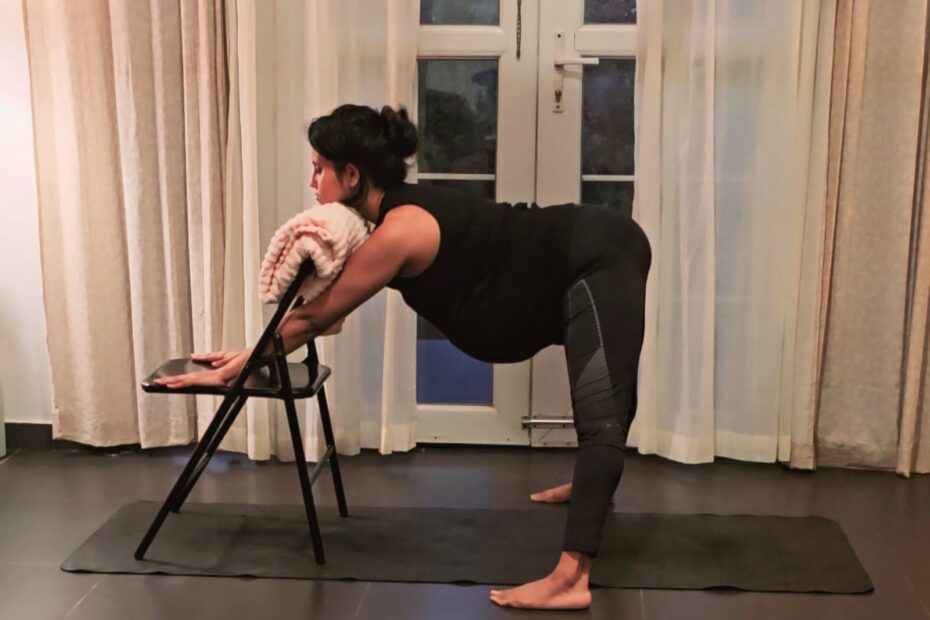Stretching Guidelines During the Third Trimester
During the last trimester, the hormone relaxin plays a significant role in preparing the body for childbirth. This hormone increases the flexibility of ligaments, joints, and muscles, particularly around the pelvic region, to facilitate delivery. However, while this enhanced flexibility can be beneficial, it also requires careful consideration to prevent overstretching or injury. Here’s how relaxin impacts the body and how to safely approach stretching:
The Role of Relaxin:
- Increased Flexibility:
- Relaxin loosens the ligaments and joints, allowing for greater range of motion.
- Pelvic Region Impact:
- Relaxin’s effects are most concentrated around the pelvis, softening the joints to prepare for childbirth. However, this can also reduce joint stability, increasing the risk of strain or injury.
Stretching Safely:
- Avoid Overstretching:
- Overstretching the muscles and ligaments around the pelvis can lead to discomfort or long-term issues.
- To stay safe, limit your stretching to about 70% of your usual ability. Stretching less aggressively helps protect the ligaments from excessive strain.
- Use Props for Support:
- Incorporate supportive props such as chairs, yoga blocks, or bolsters during your practice.
- These props help stabilize the pelvis and prevent unnecessary strain, ensuring proper alignment and safety.
- Focus on Controlled Movements:
- Avoid jerky or forceful movements that may put undue pressure on the joints and ligaments.
- Instead, practice slow, mindful stretches to maintain flexibility without overexerting the body.
By understanding the effects of relaxin and following these guidelines, you can enjoy the benefits of increased flexibility while protecting your body during the last trimester. Always listen to your body and consult a healthcare provider or yoga instructor for personalized advice.
Guidelines for Practicing Yoga During the Third Trimester
Incorporate Second Trimester Poses
- During your last trimester, you can continue practicing the poses you learned in the second trimester. Alternate these poses with the additional sequence mentioned below to create a balanced routine.
- Practice According to Your Needs:
- It is essential to listen to your body and adapt your practice to your current needs.
- If certain poses, such as squats (Malasana), cause discomfort or pain in the pelvic region, modify the pose by using props like a block or a chair to support your pelvis.
- Focus Areas in Your Practice:
- Below is a categorized group of asanas designed to address key areas:
- Stretching the Sides of the Body: To create space and relieve tension.
- Widening and stretching the pelvis: To prepare for childbirth and ease any tightness.
- Below is a categorized group of asanas designed to address key areas:
By practicing mindfully and incorporating props as needed, you can safely support your body during this transformative phase. Always prioritize comfort and stability over achieving deeper poses.
Widening and stretching the pelvis
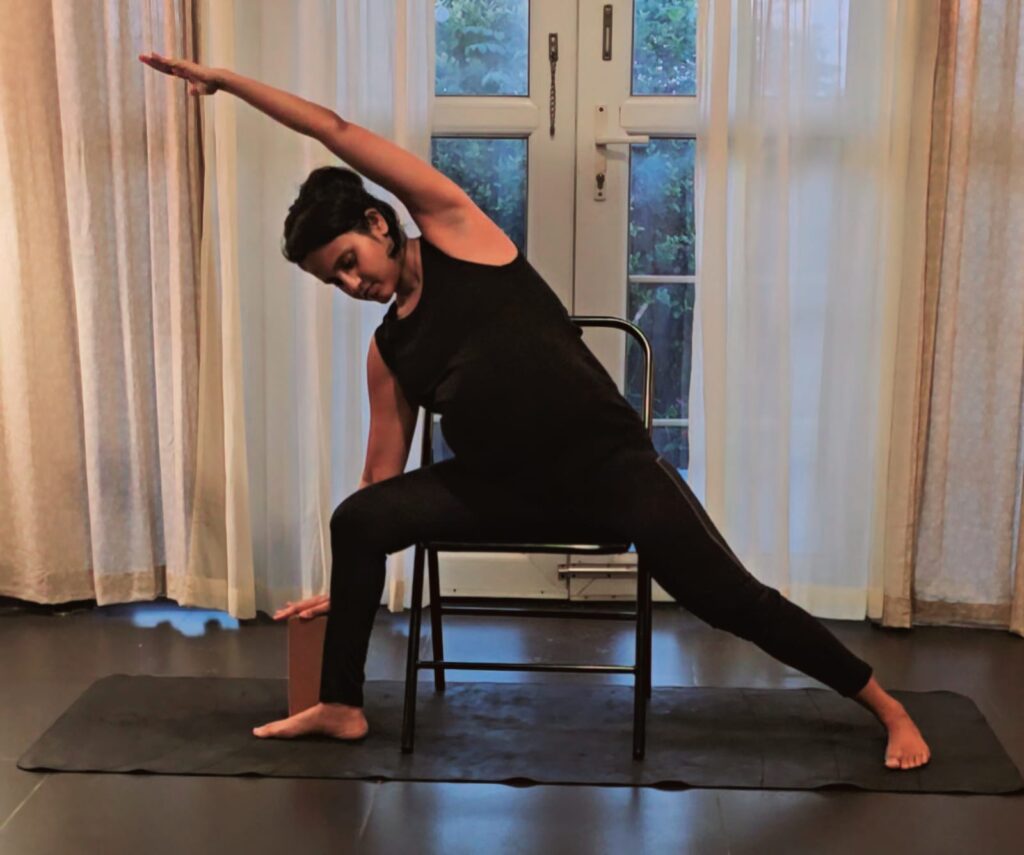
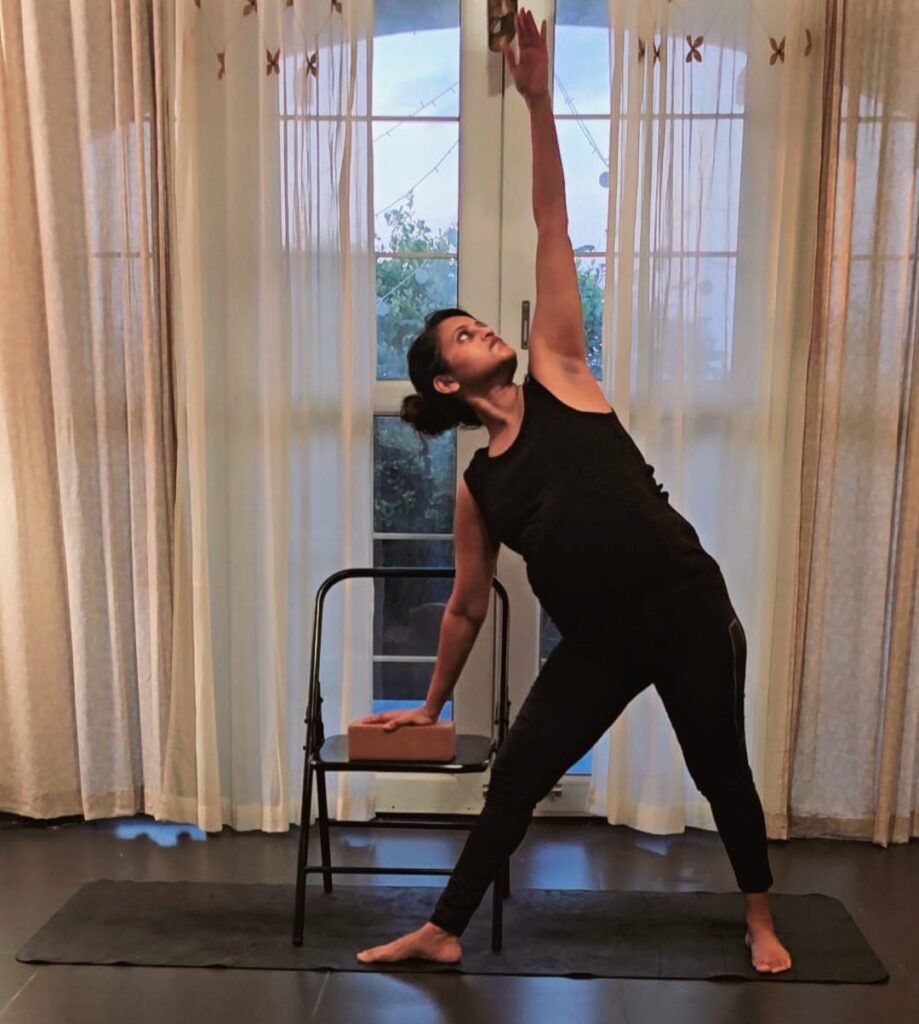
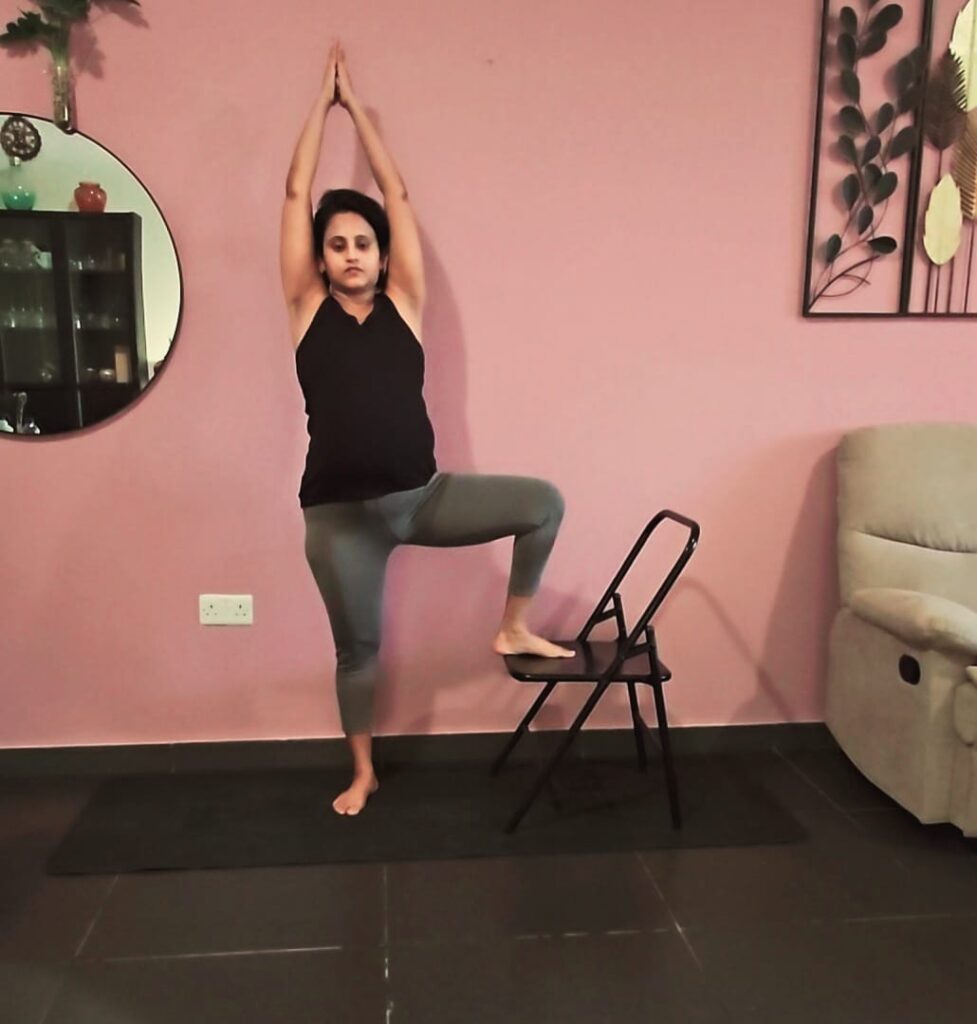
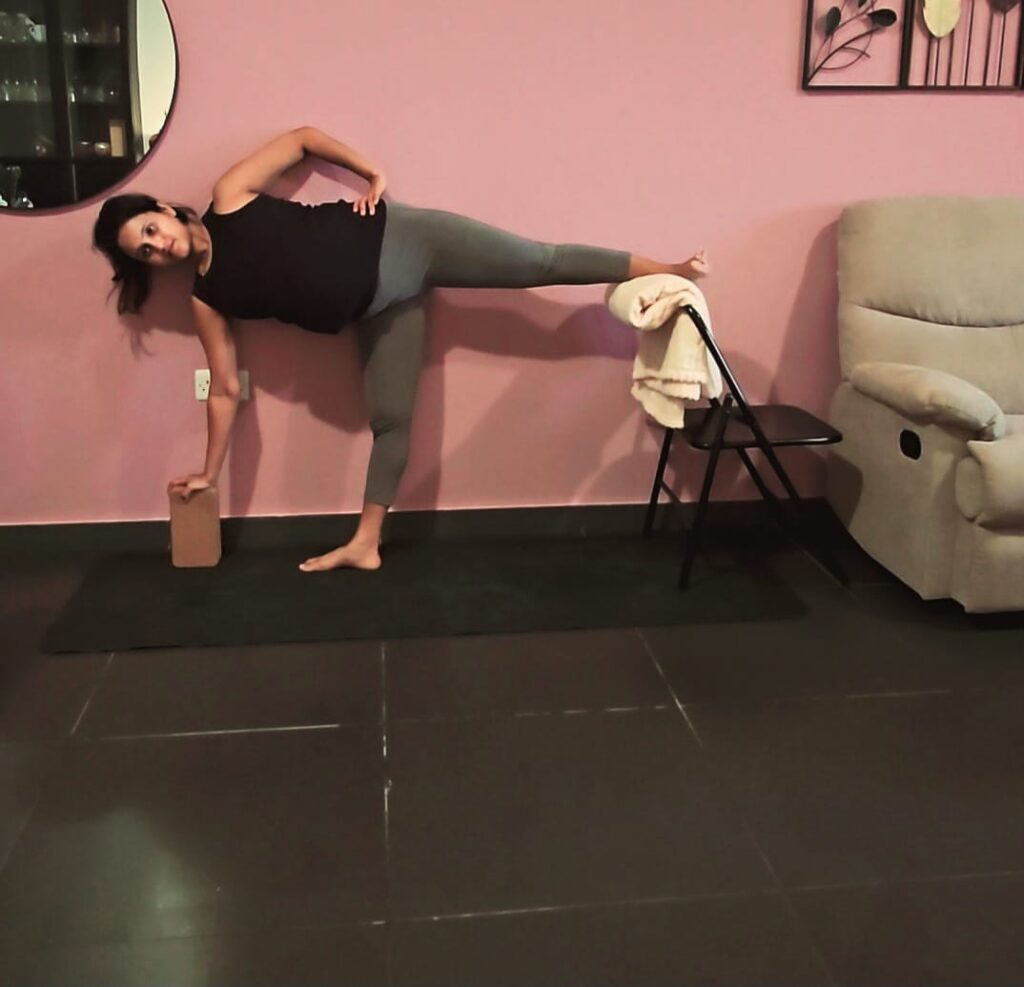
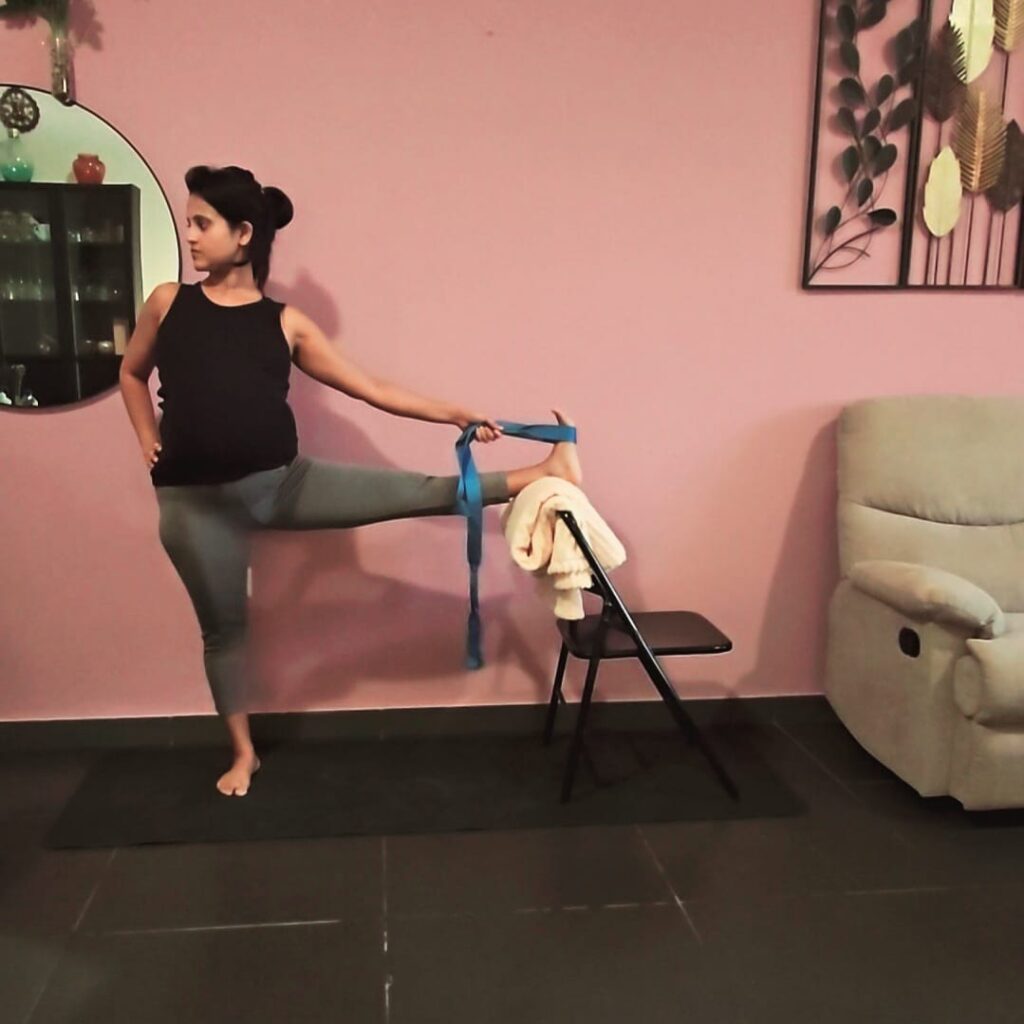
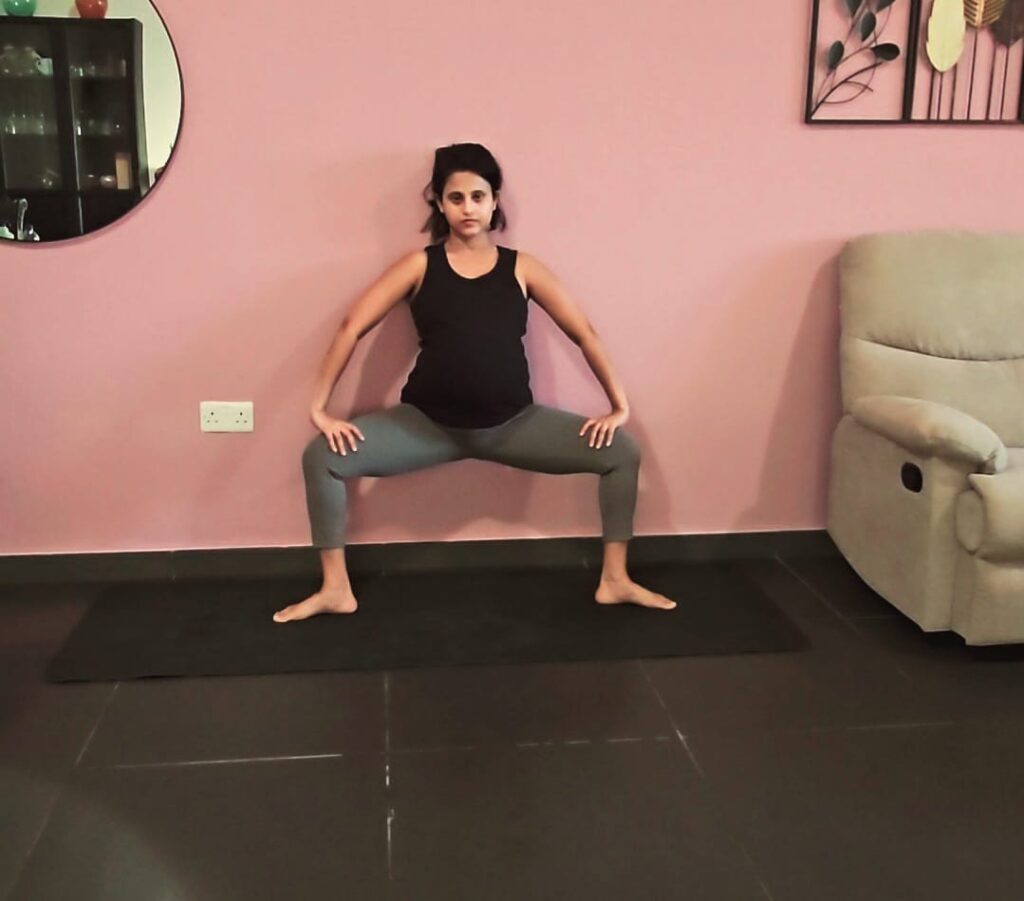
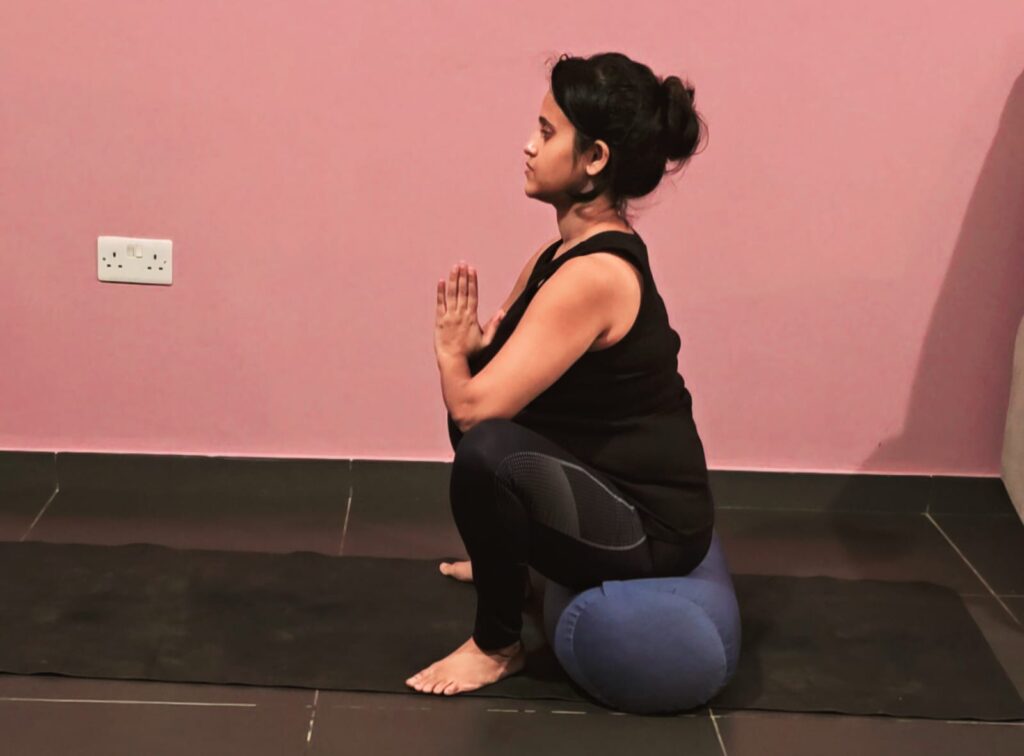
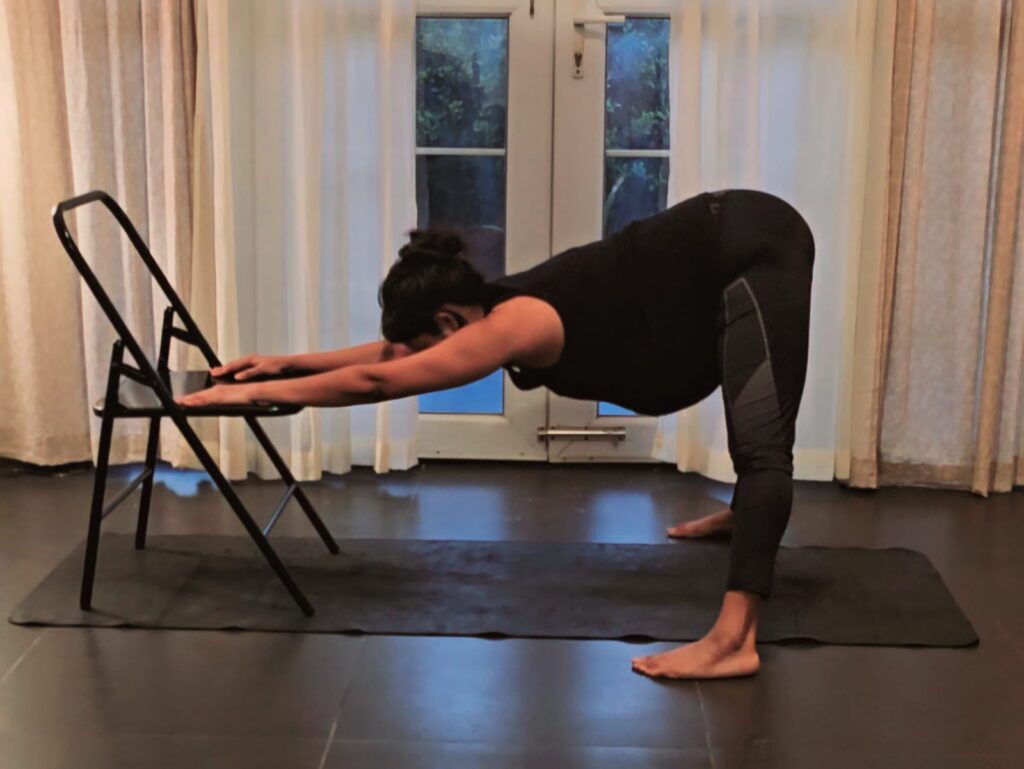
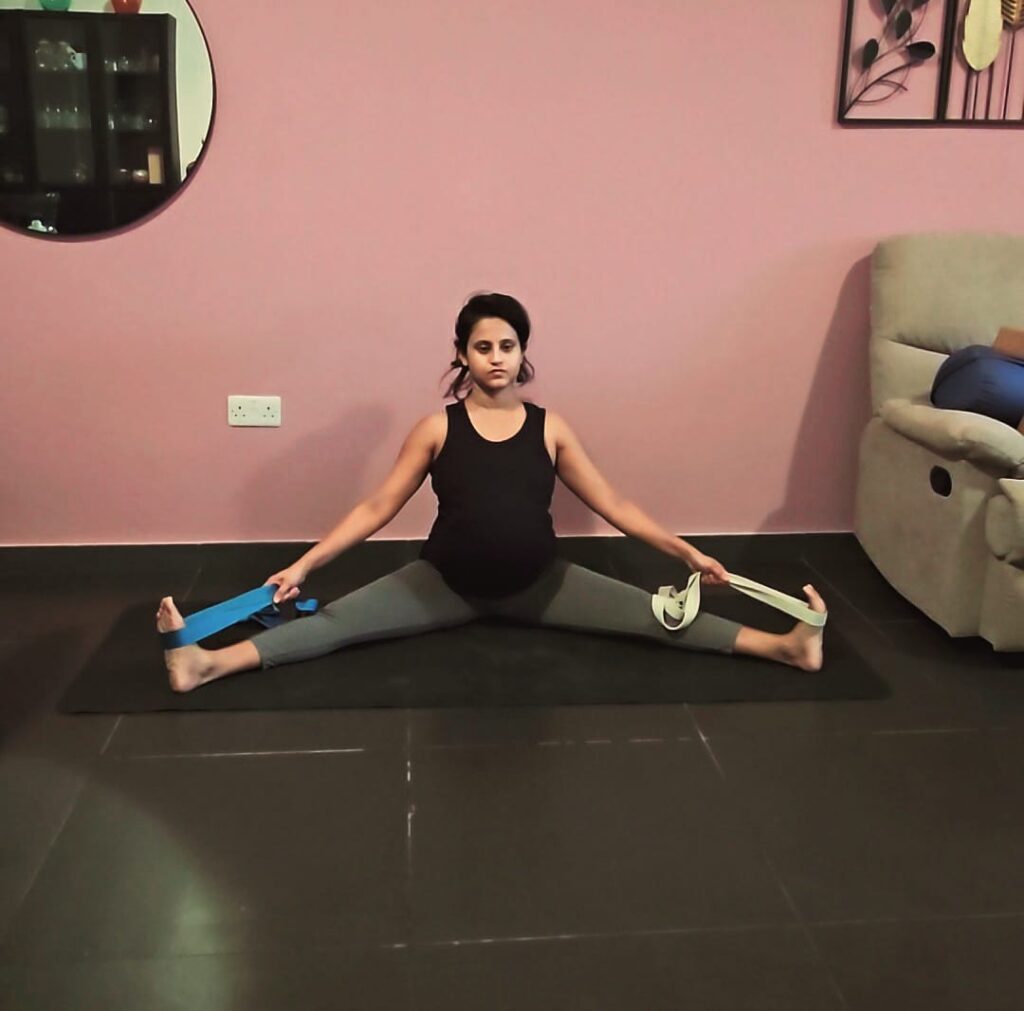
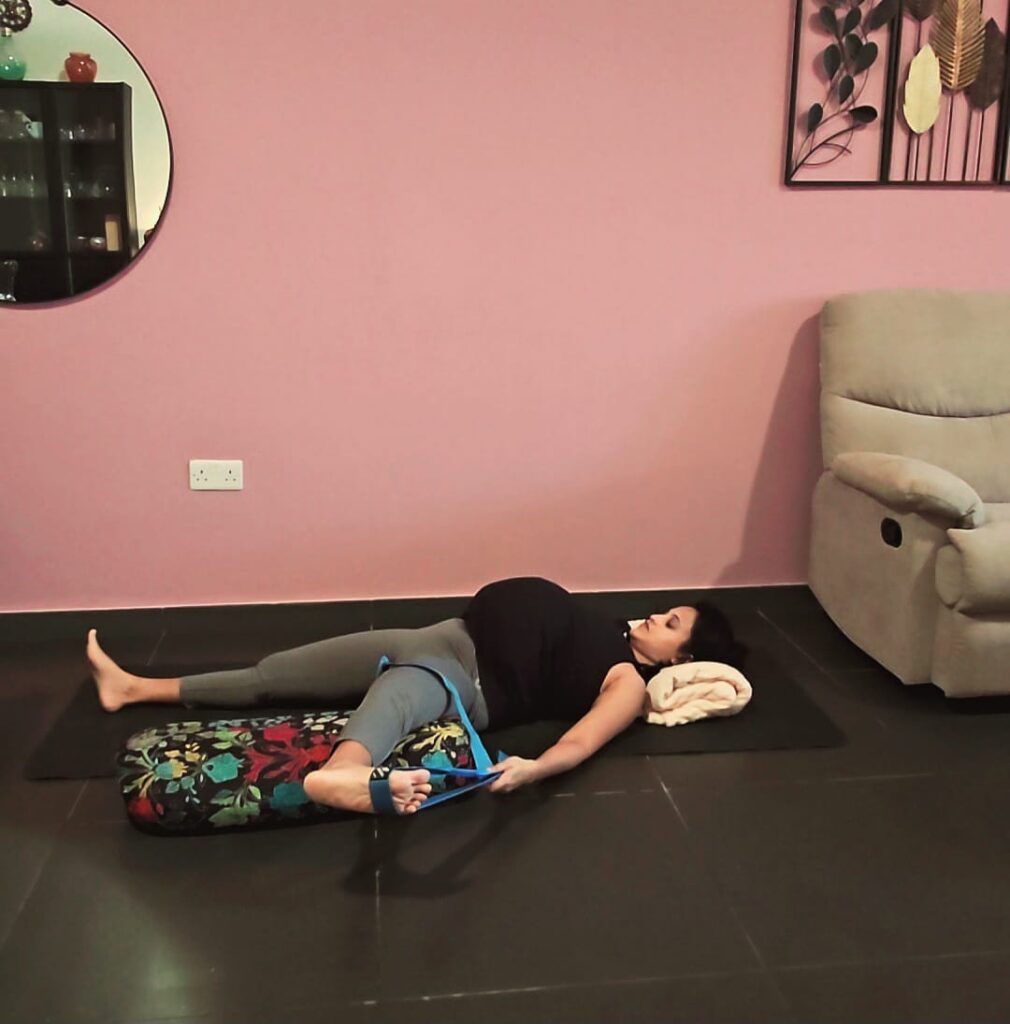
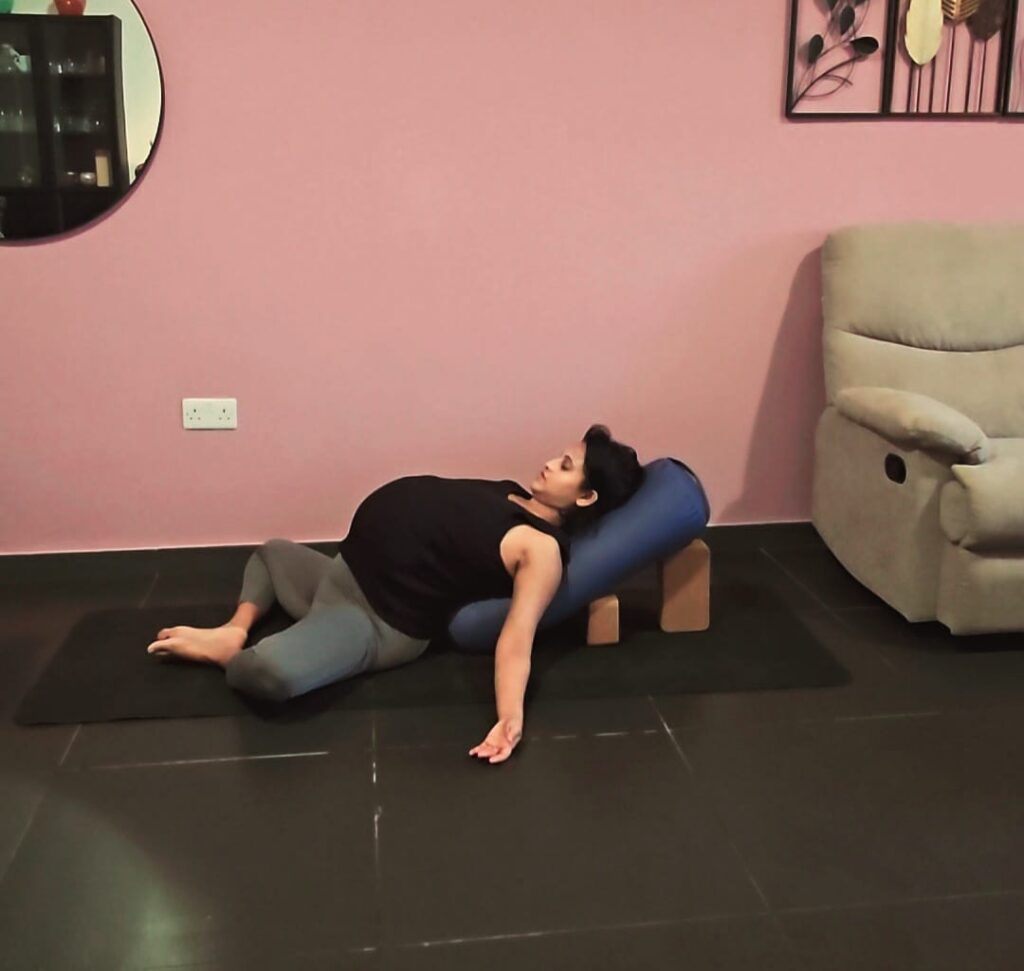
Stretching Sides of the body
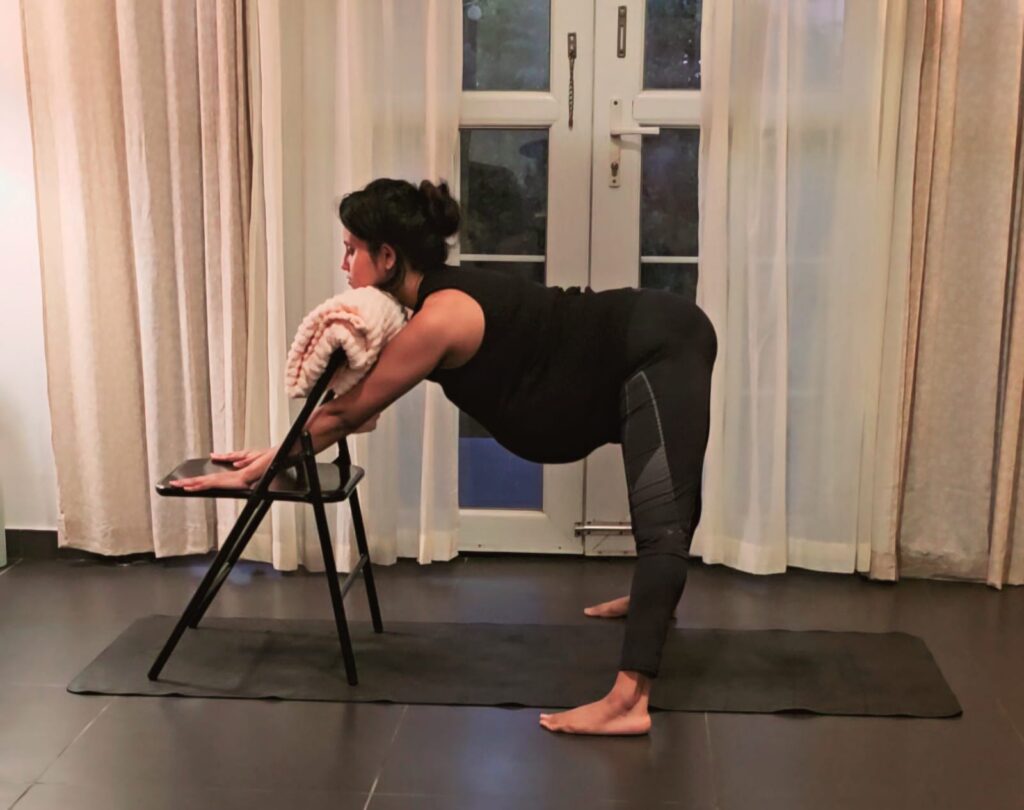
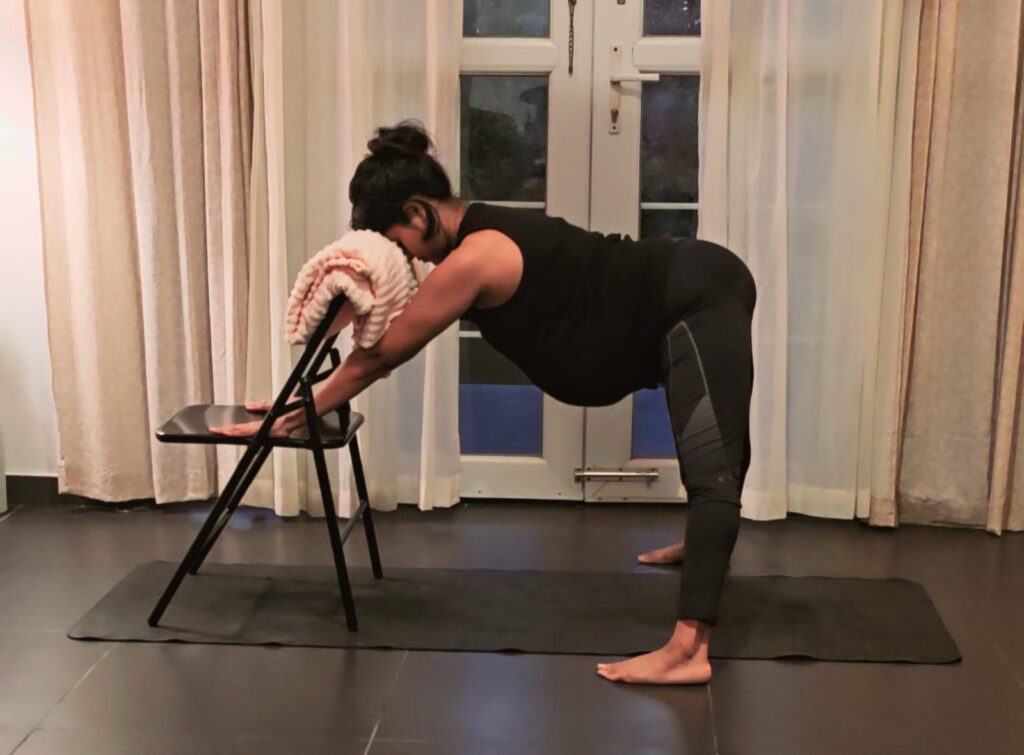

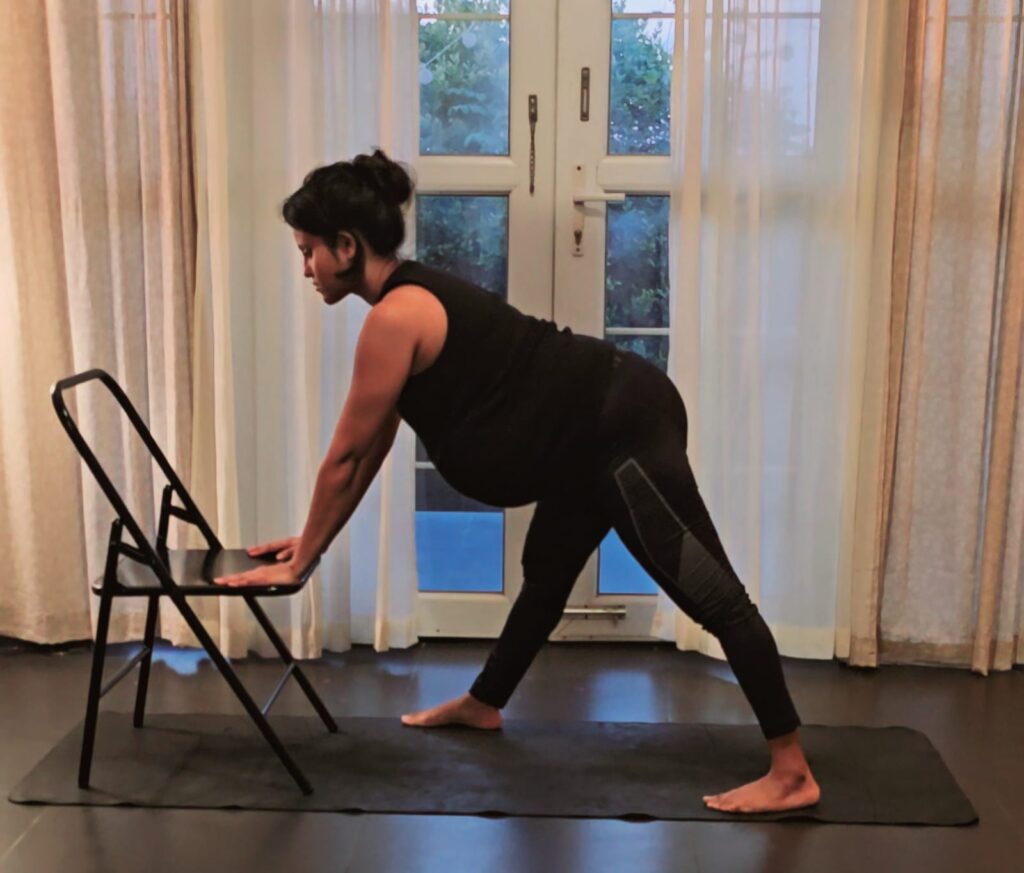

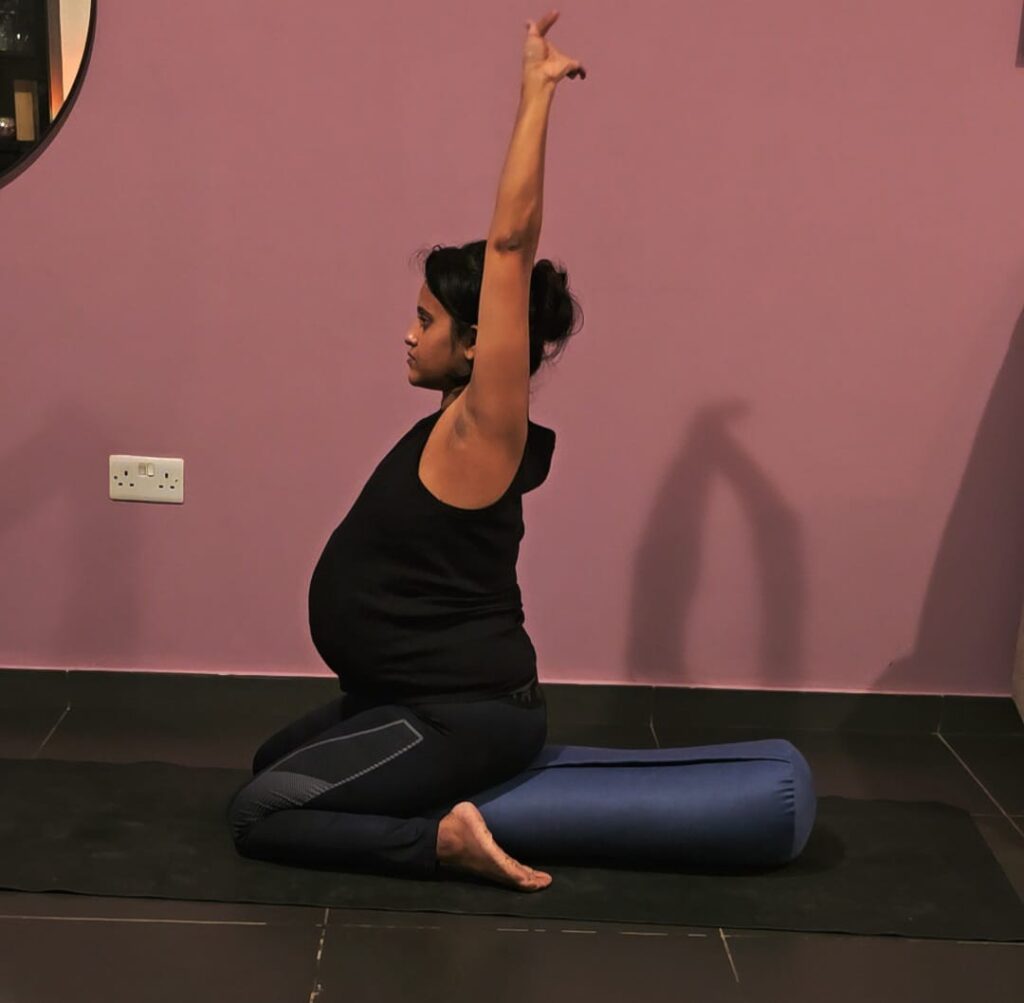
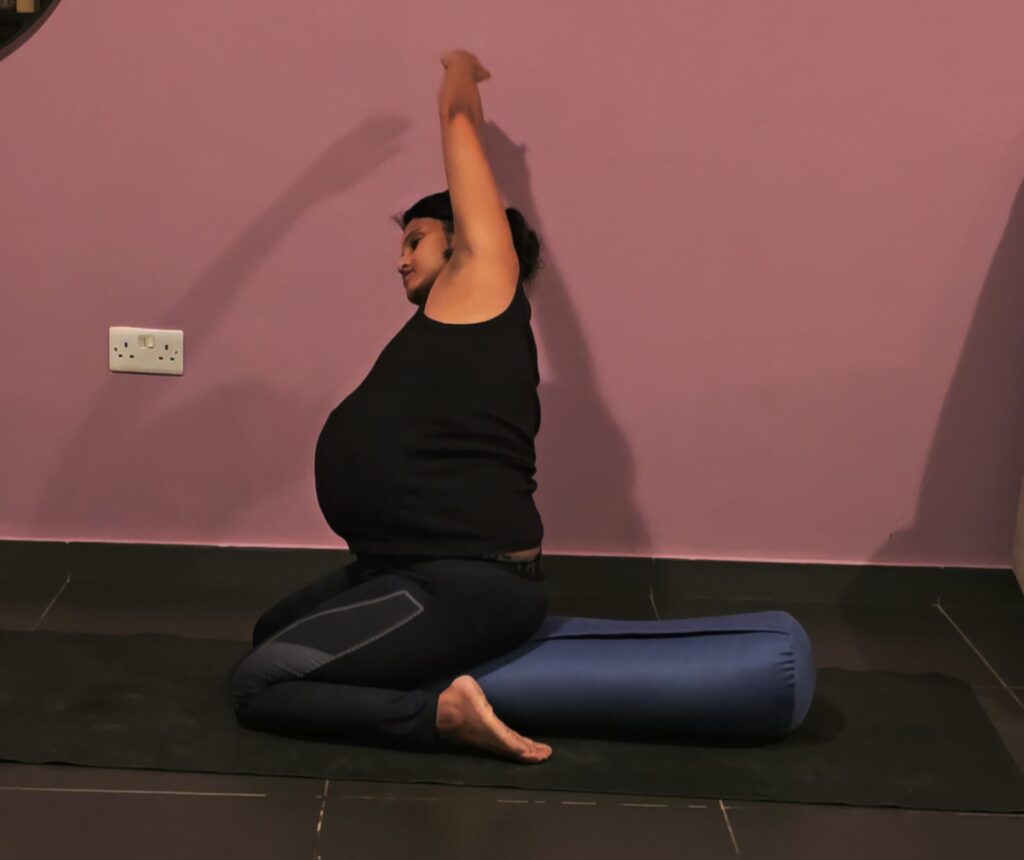
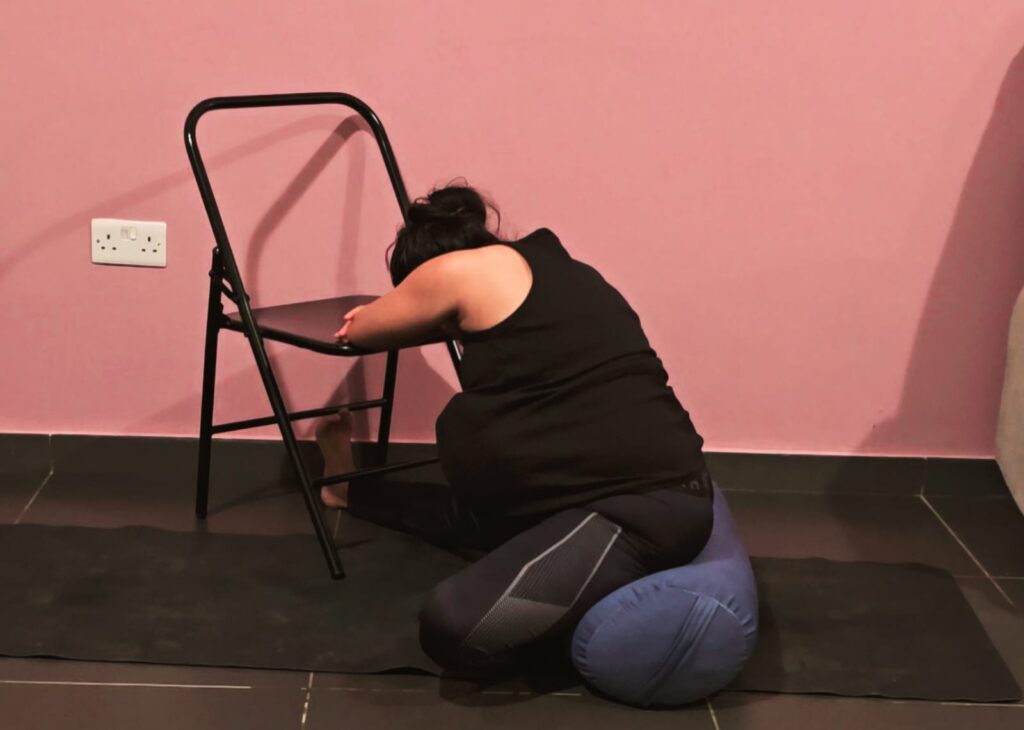
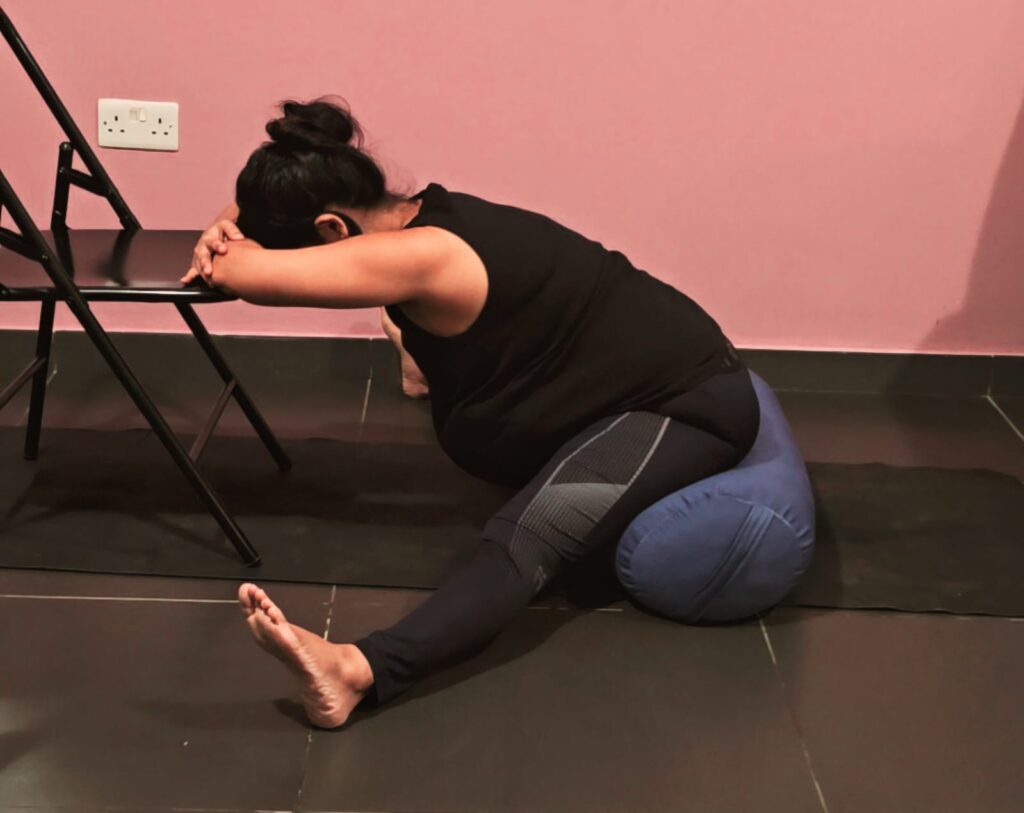
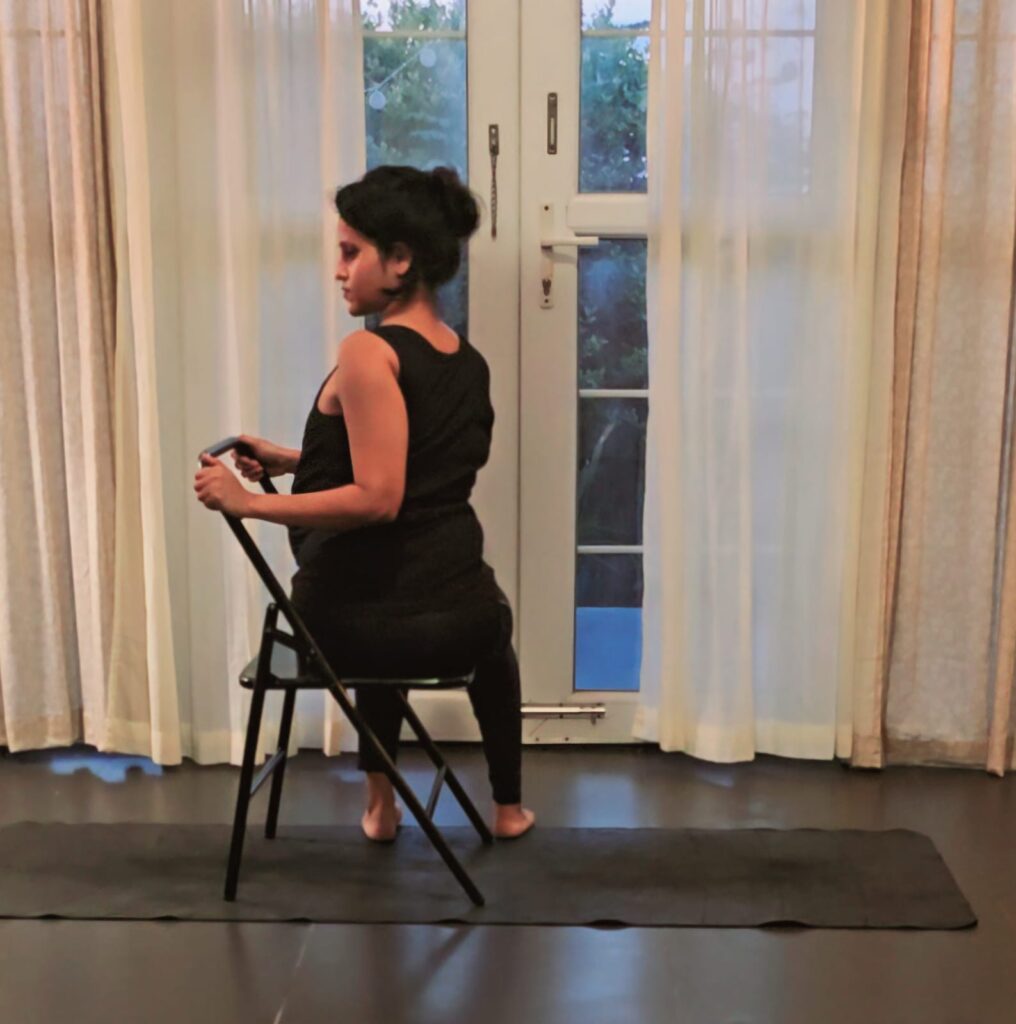


Supta Baddha Konasana: The Best Relaxing Yoga Pose for All Trimesters

This is the most relaxing posture: Supta Baddha Konasana (Supported Butterfly Pose). It can be practiced in any trimester.
Please note: The lady practicing in the image is a regular practitioner, so her flexibility is greater. If your knees are not going down, do not force them. Instead, place two blocks or pillows below the knees on either side to support the pelvis.
Remember not to overstretch the pelvis, especially during the third trimester, as the hormone relaxin is already in action, loosening the joints and ligaments in preparation for delivery.
